December 2016, the crowd at the Oceti Sakowin Camp in North Dakota celebrates a victory in the fight that has brought together several Native American nations to stop the Dakota Access pipeline and protect water resources.
For the fifth edition of its summer retrospective series, Equal Times pays tribute to the individuals and groups who mobilise, locally and spontaneously, outside of traditional, hierarchical structures, to fight for the protection of their rights and/or political and economic change for all.
The success of some grassroots movements has already shaped contemporary history. In Europe, for example, Spain’s indignados movement, born in March 2011 out of a protest in a public square in Madrid, has opened the door to a new type of citizen in parliament which run major cities such as Madrid and Barcelona, inspiring a “new left” that is rethinking the concept of democracy and the place of “ordinary people” in politics.
New forms of grassroots dialogue and action have emerged in recent years, from France’s Nuit Debout to the various offshoots of the Occupy movement to Ukraine’s EuroMaidan or the Hong Kong’s Umbrella Revolution. And their rise is not over.
Aside from the movements opposing a government or economic system, grassroots activism is also driven by more specific or community-based issues. Often, an issue can be brought to the fore by a minor incident, one event too many that turns a long-standing problem into one that will no longer be tolerated.
Some start out as the subject of a simple hashtag and go on to stir people to converge around the issue and look into the causes and possible solutions, attracting the attention of the media, and then politicians (as a rule). Examples come to mind such as #BlackLivesMatter, which has developed into a genuine anti-racism movement in the United States and beyond, #BringBackOurGirls, which put the spotlight on the impact of terrorism in Nigeria, or #NiUnaMenos, which has been calling out violence against women in Latin America since 2015.
What lessons can these new grassroots movements teach us? Can local and individual struggles have global resonance? One thing they do demonstrate is that uniting and fighting together can have a real impact.
Those with the most to gain from this form of activism are “the forgotten” or “the voiceless”. Often first among “history’s forgotten ones” and those overlooked by economic policymakers are indigenous peoples. They enjoyed a fleeting moment of visibility on 9 August, International Day of the World’s Indigenous People. The rest of the time, they struggle not only to defend their rights but also their contribution to global knowledge and nature conservation. Equal Times journalists went to meet the last indigenous people of the European Union: the Samis of Lapland. They are fighting, under the banner of Ellos Deatnu! (Long Live River Deatnu!), to be heard by the Finnish and Norwegian governments.
LGBT communities across the world have also understood the need to unite to defend their rights. In Uganda, courageous activists are fighting against the criminalisation of homosexuality, as Kasha Jacqueline Nabagesera explains in a recent interview with Equal Times.
Taking ownership of an issue is also a feature of these movements of “ordinary people” responding to their leaders’ inaction. The Caravan of Mothers that photographer Consuelo Pagaza followed to Mexico for Equal Times is not only aimed at finding clues as to the whereabouts of loved ones who have disappeared on migration routes but also at alerting to the dangers of these “paths of death”.
These movements are also seeking to reinvent the fight. This can also, paradoxically, be achieved through forms of mobilisation tried and tested for over a century, such as marches and civil disobedience, because it would be wrong to assume that traditional methods have lost their power to make a difference.
That is the thinking, at least, behind the new generation of non-violent resistance activists in Palestine. Chloé Demoulin went to observe the work they do on the ground, through local movements such as Taghyeer (‘Change’, in Arabic), which advocates non-violent action, or the Women Wage Peace movement. Their reasoning is clear: the approach their leaders have taken for decades is not working, and a paradigm shift is needed.
And finally, we cannot talk about these grassroots movements without mentioning the pivotal role of digital technology. Social media has undoubtedly played a role in many social movements over the last decade. But other digital tools are also being deployed, such as those used by Taiwanese students, members of the Sunflower Movement, providing citizens with platforms for engagement. As journalist Nithin Coca explains, participation in political life has been strengthened, a notable feat “in a region that is seeing the regression of active democracy”.
The EU’s last indigenous peoples fight for self-determination and land rights
by Fanny Malinen et Steve Rushton
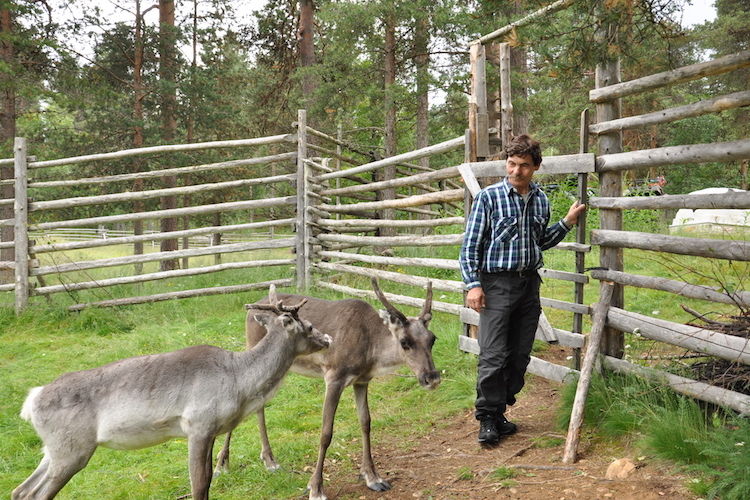
Heikki Paltto, a reindeer herder and vice president of the Finnish Sami Parliament, says that indigenous communities should be taken into account when big projects are planned by the state.
A serious man dressed in gákti, a traditional Sami (also Sámi or Saami) costume, speaks on a video on Facebook.
"This is a call for help," he starts. "The governments of Finland and Norway are trying to make salmon fishing illegal for the Sami and give new fishing rights to rich people who have built cabins on our homeland. This is theft in broad daylight. We are being denied the right to our culture, and access to one of the key sources of food in the Arctic."
The man speaking is Aslak Holmberg, vice president of the Sami Council that represents the interests of indigenous Sami people in Finland, Norway, Sweden and Russia. He is also a fisherman from Nuorgam in the northernmost county of the Finnish state, Ohcejohka (Utsjoki in Finnish).
"I have fished salmon as long as I can remember with my father and I have learned more from it than I can explain about subsistance, nature, language, culture."
The video was published in March, days before the Finnish government entered an agreement with Norway that dramatically changes the fishing rights in the border river, Deatnu (Teno in Finnish, Tana in Norwegian).
Read the full article on Equal Times
The Central American mothers tracing the footsteps of their missing migrant children in a caravan
by Consuelo Pagaza
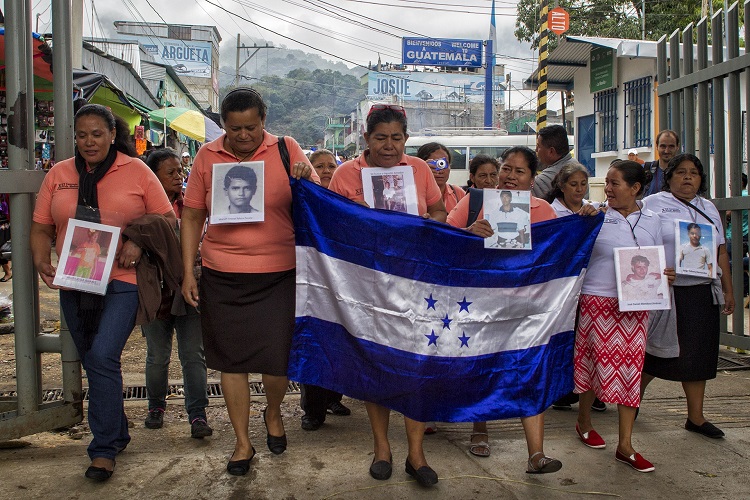
The caravan of Central American mothers marches through Ciudad Cuauhtémoc, Frontera Comalapa, municipality (Chiapas, México).
In mid-November 2016 the 12th “Looking for Life on the Path of Death” caravan set out, with 43 Central American mothers taking part. For the third year in a row, they were joined by the fathers. They are all looking for migrant children whom they have lost trace of somewhere in Mexico, and they are doing so with photos of the disappeared hanging around their necks, or carried in their hands.
Together with the photos of their own children are those of hundreds of other migrants, representing the families who could not join the caravan. This time, the parents crossed 11 Mexican states (Chiapas, Tabasco and Veracruz amongst others) that are part of the migratory route, searching boarding houses, prisons and high risk areas (owing to the presence of organised crime and the absence of the authorities).
The caravan, made up of mothers and fathers from El Salvador, Honduras, Nicaragua and Guatemala, is protesting at the disappearance of thousands of Central Americans in Mexico, and at the lack of migration policies to guarantee safe passage for migrants (to the US).
Read the full article on Equal Times
Kasha Jacqueline Nabagesera: “Africa’s LGBT community is stronger together”
by Linda A. Thompson
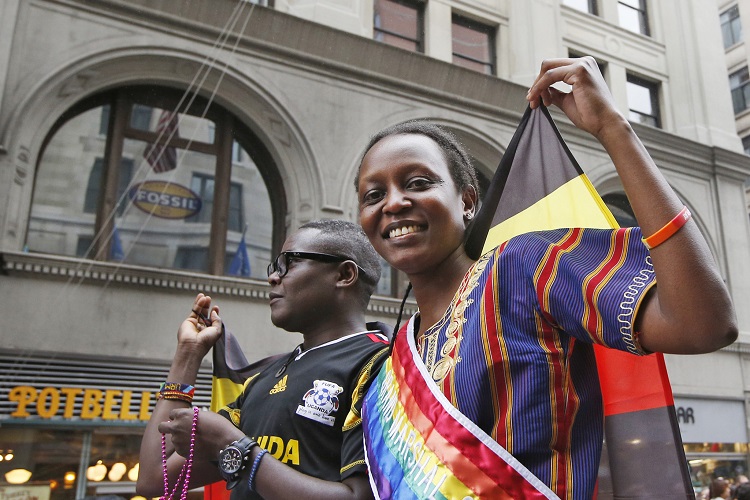
Ugandan LGBTI rights leader Kasha Jacqueline Nabagesera (right) serves as a grand marshal during the Heritage Pride March in New York on 28 June 2015.
Kasha Jacqueline Nabagesera is one of the leading LGBTI (lesbian, gay, bisexual, transgender and intersex) activists on the African continent. She is one of the founding members of the Ugandan LGBTI movement and played an instrumental role in scrapping down draconian anti-gay legislation in 2014 that became widely known as the “kill the gays” bill (the draft law called for the death penalty for anyone found guilty of “aggravated homosexuality”), earning the country notoriety far outside its borders.
In an interview with Equal Times ahead of the Pan Africa ILGA (International Lesbian, Gay, Bisexual, Trans and Intersex Association) conference in Gaborone, Botswana, Nabagesera discussed why Ugandan lawmakers are taking a subtler, but more dangerous tack this time and why she sees her fight as a pan-African one above all else.
Read the full article on Equal Times
Reviving Palestinian non-violent resistance
by Chloé Demoulin
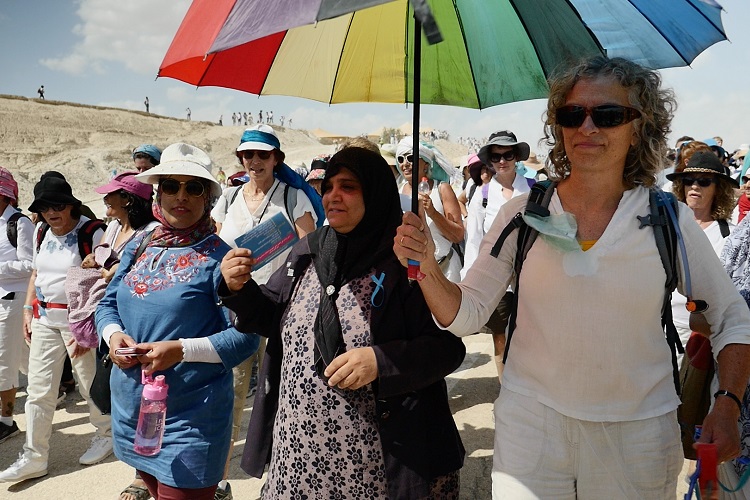
Two Palestinian women walk alongside Israeli women during a rally held by the Women Wage Peace movement, near the Dead Sea in the West Bank, on 8 October 2017.
When the United States recognised Jerusalem as the capital of Israel, the world’s political leaders and media asked themselves the same question: will Palestinians respond with violence? In the days that followed, many of the Palestinians at the “Days of Rage” held in Jerusalem expressed support for a new Intifada.
But “those who talk of an Intifada are not necessarily talking about an armed or violent uprising,” Dr Mustafa Barghouti, a Palestinian politician and a leading proponent of non-violent resistance, told Equal Times.“The first Intifada was a totally grassroots uprising and was largely non-violent,” he explains.The first Intifada erupted in December 1987 as a spontaneous protest against the Israeli occupation. It was the death of four Palestinian workers, whose car was hit by an Israeli truck, in the Jabalia refugee camp in the Gaza Strip, that unleashed the collective rage. The Palestinians accused the driver of acting intentionally.
A campaign of civil disobedience then spread throughout Palestinian society. Strikes and mass demonstrations were held and although some, often very young, Palestinians threw Molotov cocktails at the Israeli army, they were a minority. “In 1987, the movement was very strong, everyone, from all across the country, took part in it. This time, although it is only just beginning, I’m convinced that it’s going to continue and to spread,” says Barghouti, full of hope.
Read the full article on Equal Times
Building an open, digital democracy in Taiwan
by Nithin Coca
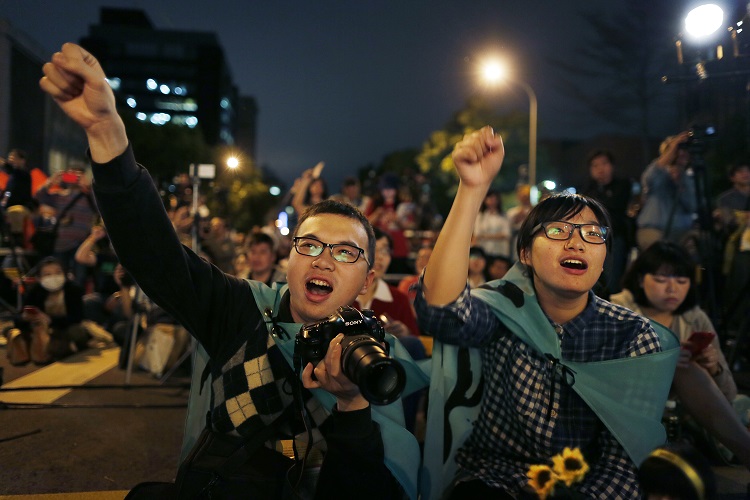
Students cheer on speakers during a gathering to mark the first anniversary of student groups storming the parliament in Taipei, Taiwan, in March 2015. The so-called “Sunflower Movement” helped to scuttle ratification of a trade pact with China, and launched the country’s web-driven democratization.
In 2014, the Sunflower Movement rocked the island-nation of Taiwan. A grassroots, youth-driven coalition, they used innovative open source digital organising tools in a broad effort to stop a controversial trade deal with China the then-ruling Kuomintang party was planning to rush through the legislative process. They famously occupied the national parliament for three weeks, and ultimately succeeded in getting many of their demands met.
“It was a hugely important event for Taiwan, and it really awakened an enthusiasm...and a conviction in young people that politics was still an undertaking they should, and could, put themselves into,” says Shelley Rigger, a professor and expert on Taiwanese politics at Davidson University in North Carolina.
Two years later, in an event many connect to the Sunflower protests, the progressive opposition candidate, Tsai Ing-wen, was elected to the Presidency, running on a platform that included several demands of the Sunflower protestors, including a dedication to transparency in governance.











